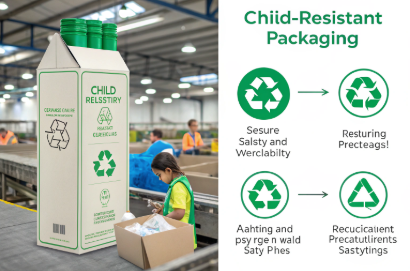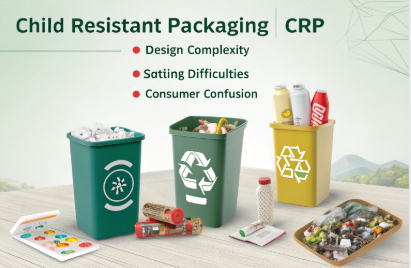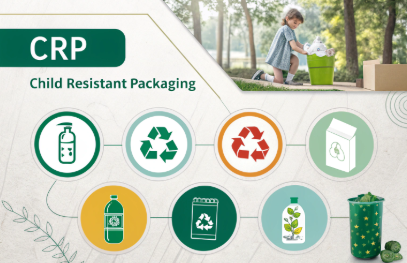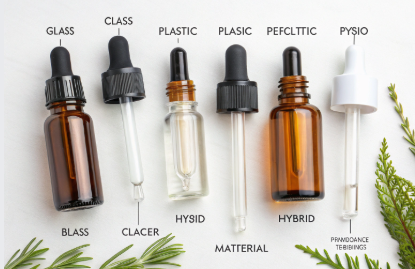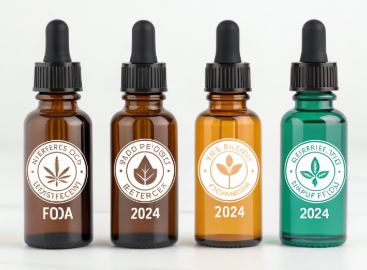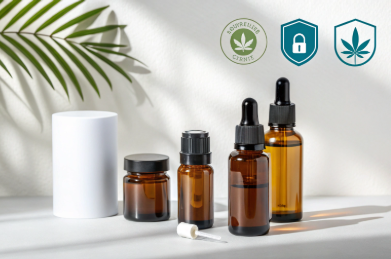Many brands care about child-resistant packaging, but few consider what happens after disposal. Are these packages recycled—or rejected by sorting systems?
Child-resistant packaging recycling rates vary widely: EU leads with over 50%, the US averages 30-35%, while most of Asia lags below 20%, largely due to infrastructure gaps and mixed materials.
Despite their role in safety, child-resistant packages often complicate recycling. Understanding the differences across regions helps businesses make smarter, greener packaging choices.
Why is child-resistant packaging harder to recycle?
Child-resistant packaging (CRP) solves one problem—accidental ingestion—but creates another: difficult disposal.
These packages are less likely to be recycled because they mix multiple materials, confuse consumers, and resist standard sorting systems.
Let’s break it down further.
Multi-layer design causes trouble
CRPs often combine plastics with metal springs or locking mechanisms. These composite designs, while necessary for safety, are rarely separable by the consumer or typical recycling machinery.
| Component | Material Type | Recycling Issue |
|---|---|---|
| Cap | Polypropylene + metal spring | Requires separation |
| Bottle | HDPE / Glass | Commonly recyclable |
| Outer seal | PVC film / foil | Not recyclable |
| Label | Adhesive-backed | Often contaminates batch |
Unless the consumer disassembles each part—which rarely happens—the entire unit often ends up in landfills.
Consumers don’t know how to dispose of them
Recycling confusion is already a challenge in standard packaging. When CRPs add unfamiliar locking mechanisms, many consumers throw them away to avoid the hassle.
Municipal recycling systems can’t process them
Most curbside recycling programs in the US and Asia are designed for simple material types. Items that don’t conform—like CRPs with springs or mixed plastics—get flagged and diverted to landfill, regardless of their base material.
At PauPack, we’ve seen many customers struggle with this. That’s why our design team focuses on monomaterial solutions and clearly marked recyclables—even for child-resistant options.
How does the US perform in CRP recycling?
The United States invented the first child-resistant closures in the 1970s. But decades later, its recycling system hasn't adapted fully.
CRP recycling rates in the US are around 30–35%, hindered by low consumer education, state-by-state inconsistency, and lack of design-for-recycling mandates.
Let’s examine the key issues.
Inconsistent local systems
Recycling rules differ dramatically between cities. A CRP that’s accepted in San Francisco might be rejected in Dallas. This lack of standardization causes confusion and discourages effort.
No national Extended Producer Responsibility (EPR)
Unlike the EU, the US lacks a federal EPR program that makes producers responsible for end-of-life treatment. As a result, packaging design doesn’t prioritize recyclability unless brands voluntarily do so.
Poor CRP design feedback loop
Because few municipalities report data on which packages are rejected, brands rarely receive feedback on why their CRPs fail in the recycling stream. That leads to repeated design flaws.
Still, there’s hope. We’re working with several US-based brands to develop CRP designs that use only HDPE or PET—fully recyclable materials—and printing directly on the cap instead of using labels or films.
Why is the EU ahead in CRP recycling?
Europe leads in packaging recycling—and CRPs are no exception.
The EU achieves CRP recycling rates of over 50% thanks to strict regulations, harmonized systems, and consumer education.
Here’s how the EU manages to do better.
EU Packaging and Packaging Waste Directive (PPWD)
The PPWD sets ambitious targets for all packaging materials, and individual countries implement penalties for non-compliance. This creates pressure to design recyclable CRPs from the start.
Design-for-recycling certifications
Products with the "Cyclos-HTP" or "RecyClass" label signal recyclability. These certifications push manufacturers to avoid multilayer and mixed-material CRPs.
Uniform collection systems
Most EU countries have standardized recycling bins and instructions. That means a CRP designed for Germany will also work in France, the Netherlands, and Belgium, increasing system efficiency.
PauPack’s European clients have embraced this model. We’ve helped them switch to monomaterial PP caps with push-and-turn mechanisms—safe for kids, and safe for the planet.
Why is Asia struggling with CRP recycling?
While manufacturing prowess is high, recycling infrastructure in many Asian countries hasn’t caught up.
In most Asian markets, CRP recycling rates are under 20%, mainly due to informal recycling systems, low collection rates, and insufficient regulation.
Let’s unpack the challenges.
Informal collection dominates
In countries like Indonesia, Vietnam, and India, waste pickers play a central role. They focus on high-value items like aluminum and PET bottles—not complex CRPs with low resale value.
Low consumer awareness
Many consumers aren’t familiar with recycling categories. Without government-led education or infrastructure, even recyclable CRPs end up incinerated or dumped.
Lack of design guidelines
Unlike the EU, few Asian countries have rules guiding packaging recyclability. That means CRP producers prioritize cost and safety—but not end-of-life handling.
However, Asia is evolving. China, Japan, and South Korea are starting to implement stricter recycling policies. At PauPack, we’ve supported regional partners with training on monomaterial CRPs and worked to adapt products to local recycling capabilities.
Conclusion
Child-resistant packaging is essential for safety—but unless it’s recyclable, we’re just shifting the problem downstream. As brands, we must design with end-of-life in mind, especially across different markets.
Let’s make safety and sustainability go hand-in-hand.





